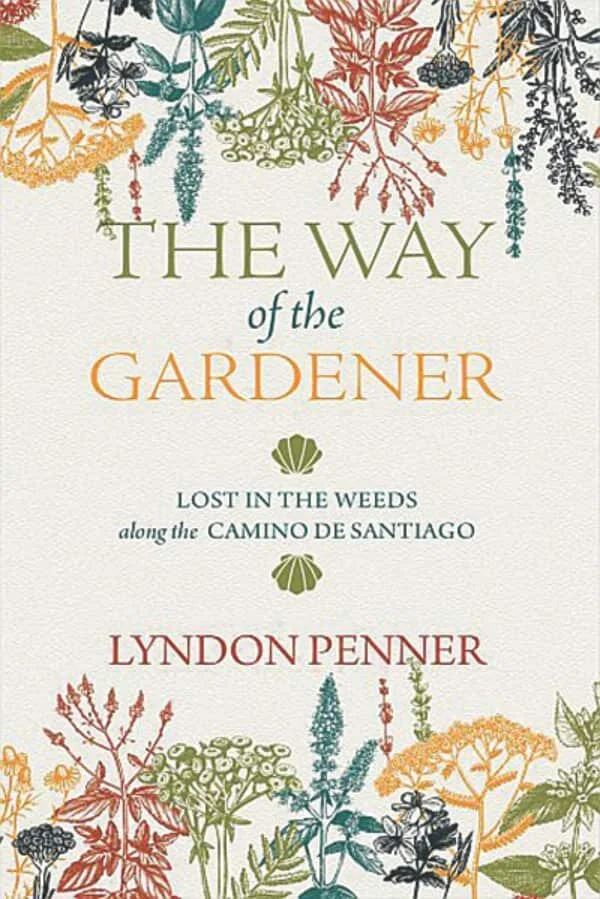SaskBooks Review: “The Way of the Gardener: Lost in the Weeds along the Camino de Santiago”
by Lyndon Penner
Published by University of Regina Press
Review by Shelley A. Leedahl
I’ve long wanted to experience “The Camino”. The Camino de Santiago (The Way of Saint James) is a weeks-long, thousand-year-old, on-foot pilgrimage that often begins in Saint-Jean-Pied-de-Port, France, crosses the Pyrenees, and continues across northern Spain to Santiago de Compostela, where the disciple St. James’ remains are entombed in the cathedral named for him. Many people undertake the arduous expedition for religious reasons, while others wish to physically challenge themselves, enjoy the Basque-country landscape, or learn more about themselves and humanity.
Camino Francés, described above, is the 800-kilometre route writer and environmentalist Lyndon Penner undertook. In his wonderfully entertaining The Way of the Gardener: Lost in the Weeds along the Camino de Santiago, the Saskatoon-based author hadn’t even heard of the trek before he’d agreed to embark on it, and the gardener/plant tour guide walked up to three hours a day with “a heavy backpack” to train.
There’s much literature about the Camino, and it’s been the setting for movies (ie: “The Way”), but Penner’s memoir examines it via a unique lens. “I happen to see the world through plants and trees and flowers,” he writes, and his book is indeed an engaging commentary on the flora and fauna experienced on his six-week journey, but it’s also punctuated with delightful anecdotes about albergues (hostels) and fellow pilgrims, meal commentary, and legends, plus spiritual and philosophical introspection. It’s often hilarious. I brought this book along on a kayak-camping weekend and read it aloud with friends: hysterical laughter ensued.
Penner’s an introvert, and the Camino swarms with people. Raised “in a very Christian household,” he no longer identifies as “religious,” and says that on the Camino he experienced “ancient forests of oak and chestnut that were more beautiful than any of the cathedrals meant to house the presence of God.” Unlike other peregrinos, he wasn’t moved by the “Cruz de Fierro” (“the iron cross”), and found the “gold-drenched cathedral at Burgos” frightening, but he adored and writes both eloquently and conversationally about Spain’s diverse trees, omnipresent flowers (“I couldn’t live in a world without lilacs”), vegetables (“Pumpkins in particular incite in me a kind of rapturous, profound joy that I cannot explain”), vines, moss, birds (“What a terrible world it would be without them”), and stone bridges. One can almost smell the flowers, hear the “gentle ringing” of cowbells, and taste the figs and almonds as he eats and describes them. When he stops to consume grapes that had fallen onto a dusty road, I also sampled the “grape-flavoured dirt”.
There’s much poetry: “In the azure sky above us, great dark birds swirled and circled like immense black snowflakes,” he writes. There’s comedy galore. Imagine trying to sleep in an albergue where a clutch of French women were “moving in and out like apparitions,” and an Australian pastor “sat up in bed, reached into what was evidently the loudest and crinkliest plastic bag ever made, and began eating peanuts”. Dang.
This book’s a gem, every step of the way. Please read it.
THIS BOOK IS AVAILABLE AT YOUR LOCAL BOOKSTORE OR FROM WWW.SKBOOKS.COM

